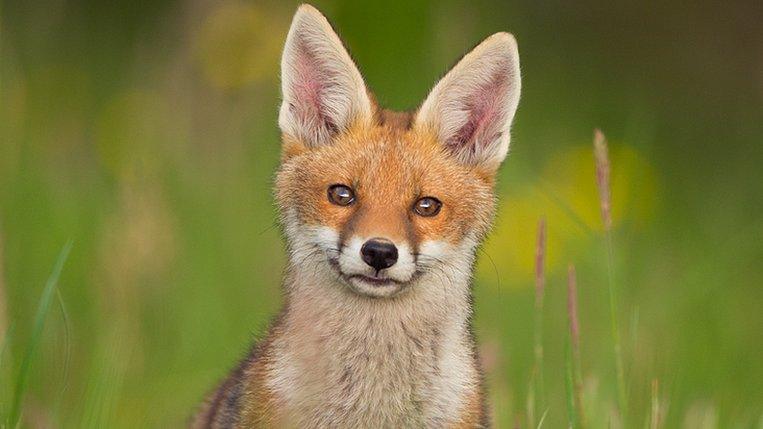Wildlife Photographer of the Year - People's Choice
- Published
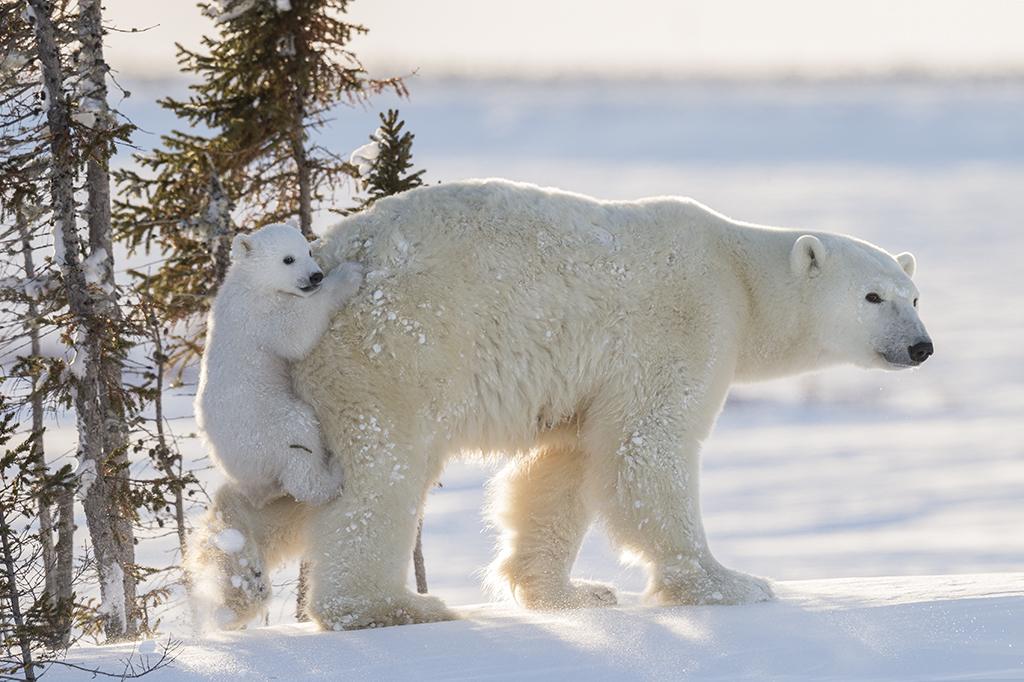
A cub escapes deep snow by hitching a ride on its mother's backside in Wapusk National Park, Manitoba, Canada.
Taken by Daisy Gilardini, from Switzerland, the photo is one of 25 shortlisted for the People's Choice Award in the latest Wildlife Photographer of the Year Competition - on show now at the Natural History Museum in London.
Scroll down to see all 25 images, pre-selected by the museum from almost 50,000 submissions from 95 countries.

A mother's hand
Alain Mafart Renodier, France
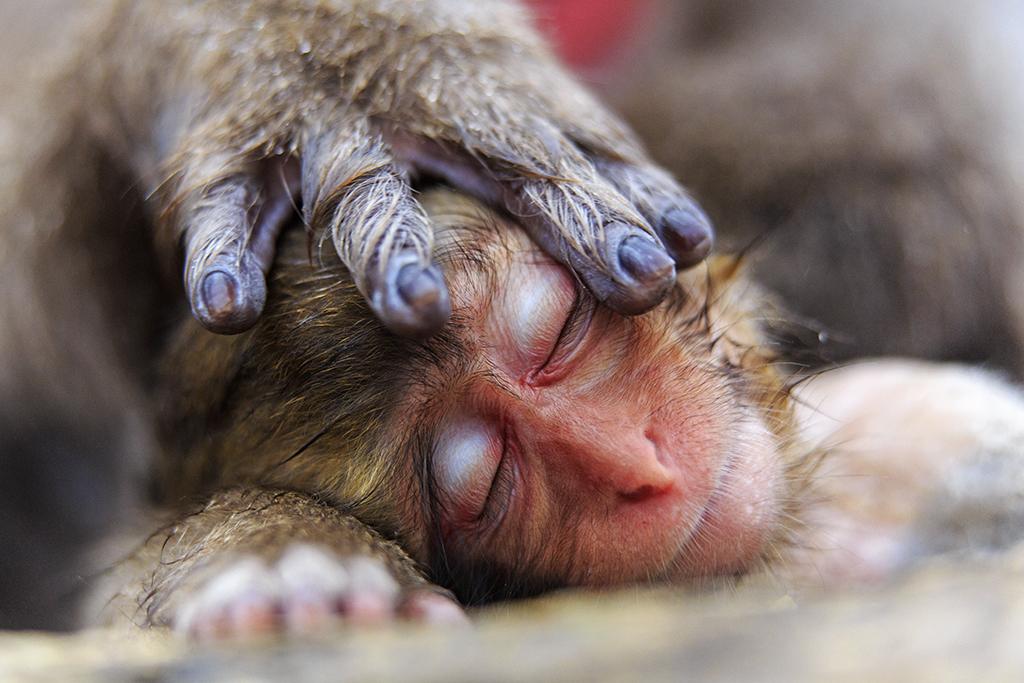
Alain Mafart Renodier was on a winter visit to Japan's Jigokudani Snow Monkey Park when he took this photograph of a sleeping baby Japanese macaque, its mother's hand covering its head protectively.

Opportunistic croc
Bence Mate, Hungary

Although this shot was taken from a safe hide, Bence Mate says it was chilling to see the killing eyes of this 4m (13ft) Nile crocodile. This one had been baited with natural carcasses on an island in the Zimanga Private Game Reserve, South Africa, but crocodiles also come here just to bask in the Sun.

The stare of death
Johan Kloppers, South Africa
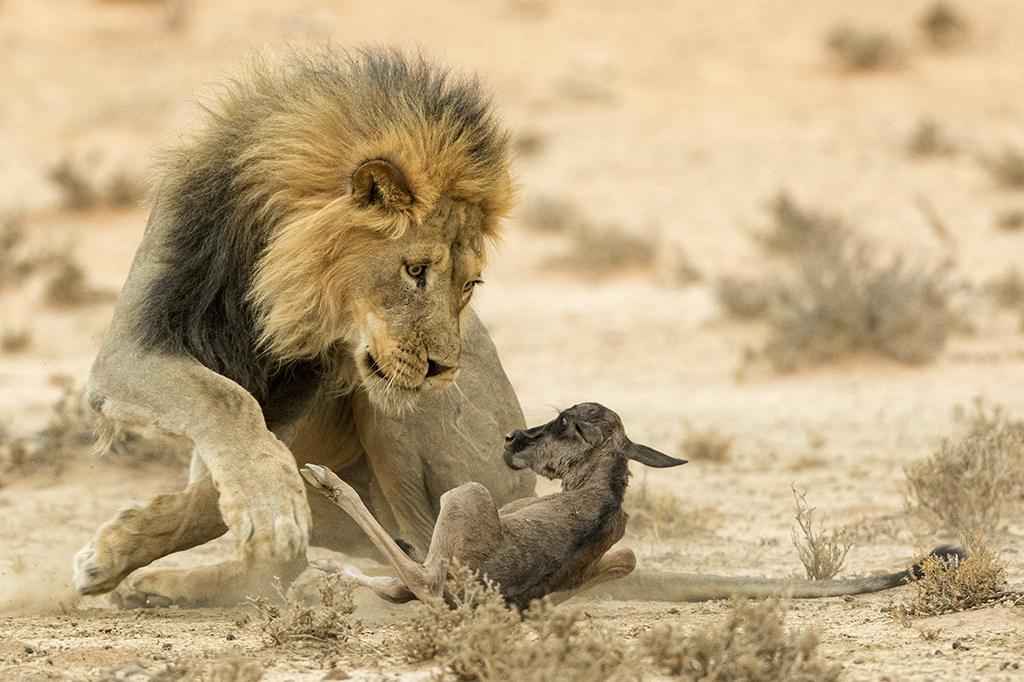
Johan Kloppers saw this little wildebeest shortly after it was born in the Kgalagadi Transfrontier Park, South Africa. Little did he know that he would witness its death later that same day. The small herd of wildebeest walked right past a pride of lions, and the calf was caught by a lioness and then taken by this male lion.

Monkey ball
Thomas Kokta, Germany
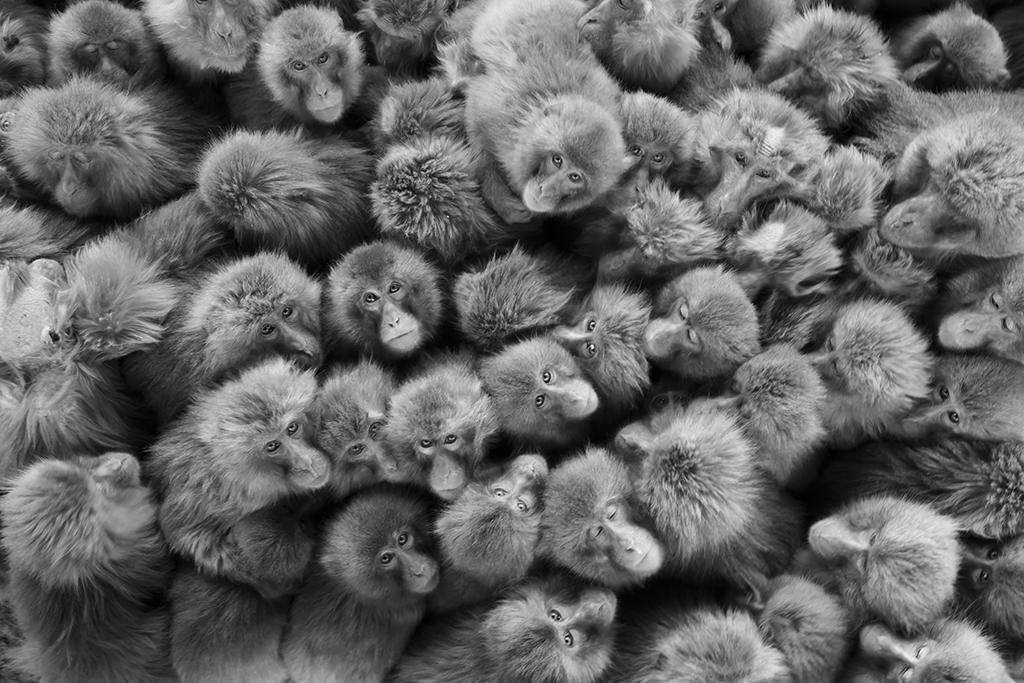
Cold temperatures on Shodoshima Island, Japan, sometimes lead to monkey balls, where a group of five or more snow monkeys huddle together to keep warm. Thomas Kokta climbed a tree to get this image.

Facing the storm
Gunther Riehle, Germany
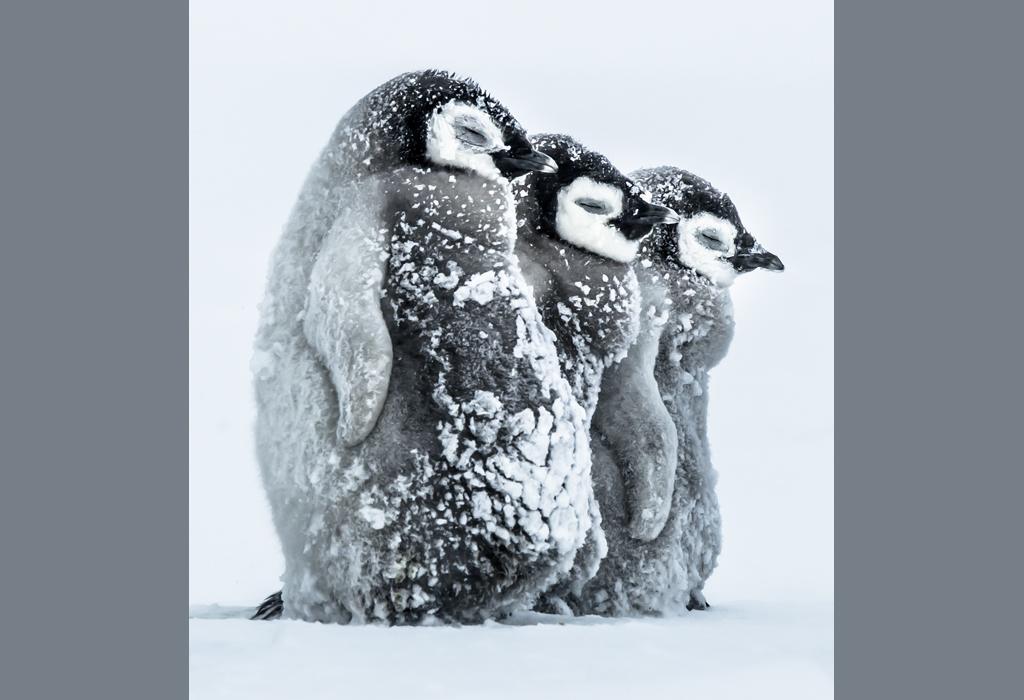
Gunther Riehle arrived at the sea-ice in Antarctica in sunshine, but by the evening a storm had picked up - and then came snow. He concentrated on taking images of the emperor penguin chicks huddled together to shield themselves.

Ghostly snow geese
Gordon Illg, US
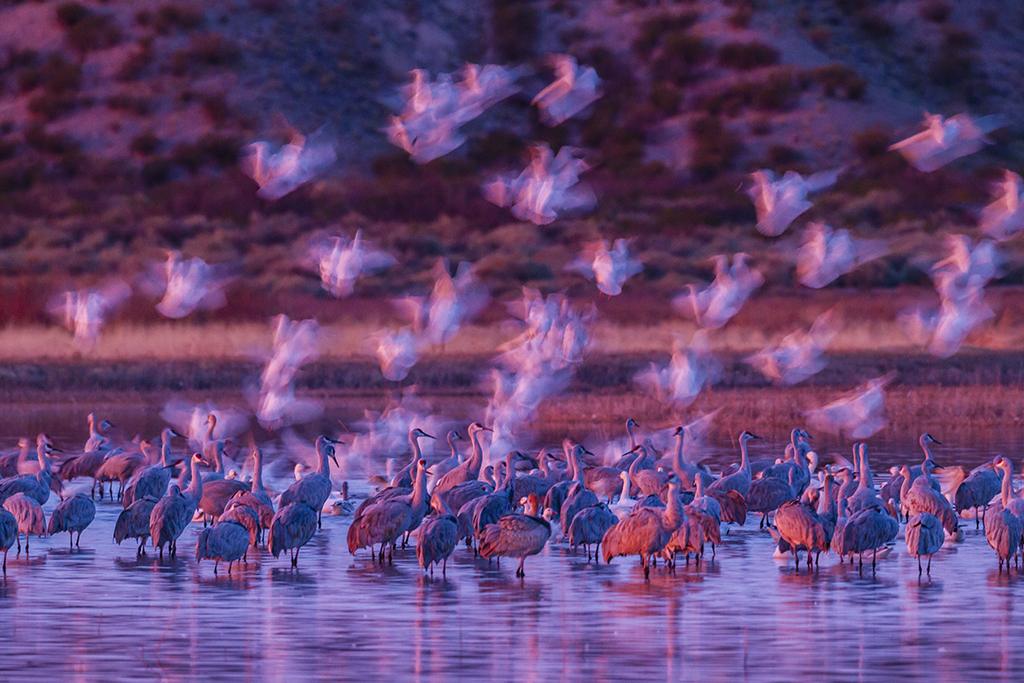
These snow geese almost seemed like ghosts in the pink early morning light as they landed among sandhill cranes in the Bosque del Apache National Wildlife Refuge, New Mexico, US.

Sisters
Bernd Wasiolka, Germany
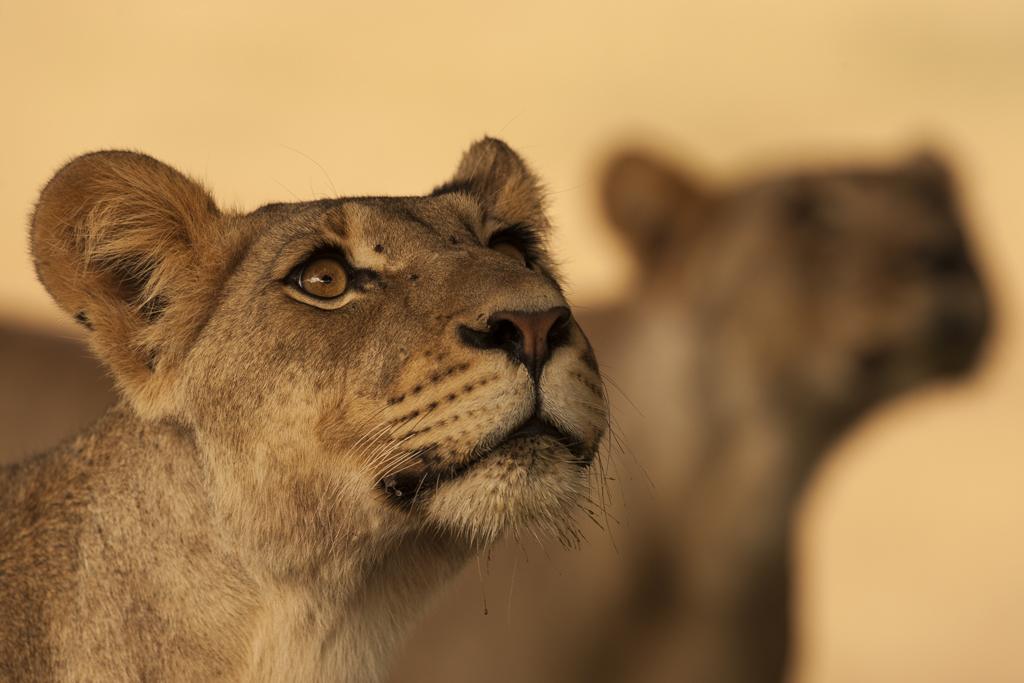
Bernd Wasiolka encountered a large lion pride at a waterhole in the Kgalagadi Transfrontier Park, South Africa. One of the two males spray-marked the branches of a nearby tree. Later two females sniffed the markings and for a brief moment both adopted the same posture.

Into the fray
Stephen Belcher, New Zealand
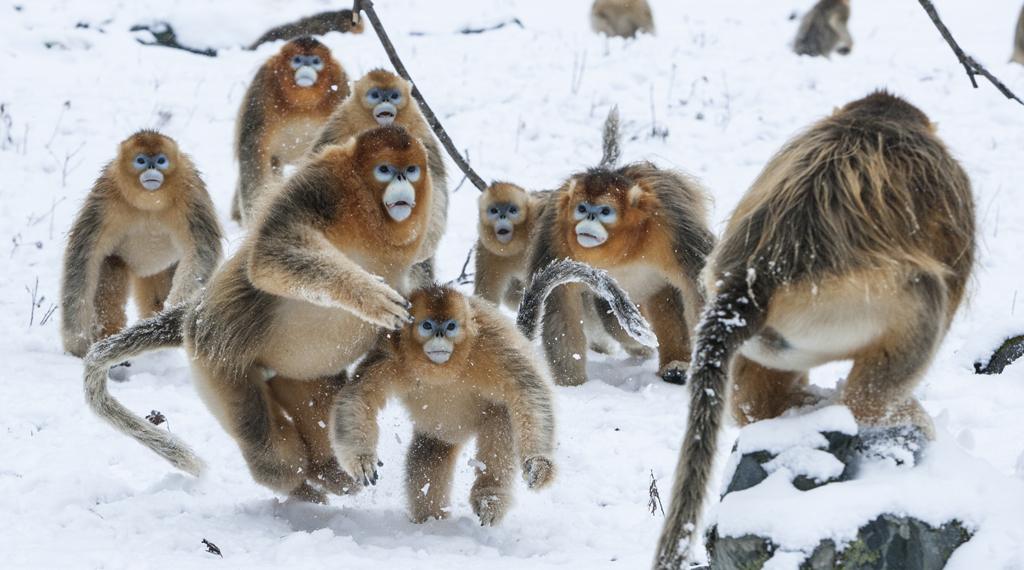
Stephen Belcher spent a week photographing golden snub-nosed monkeys in a valley in the Zhouzhi Nature Reserve in the Qinling Mountains, China. The monkeys have very thick fur, which they need to withstand the freezing nights in winter. This image shows two males about to fight, one already up on a rock, the other bounding in with a young male.

Head-on
Tapio Kaisla, Finland
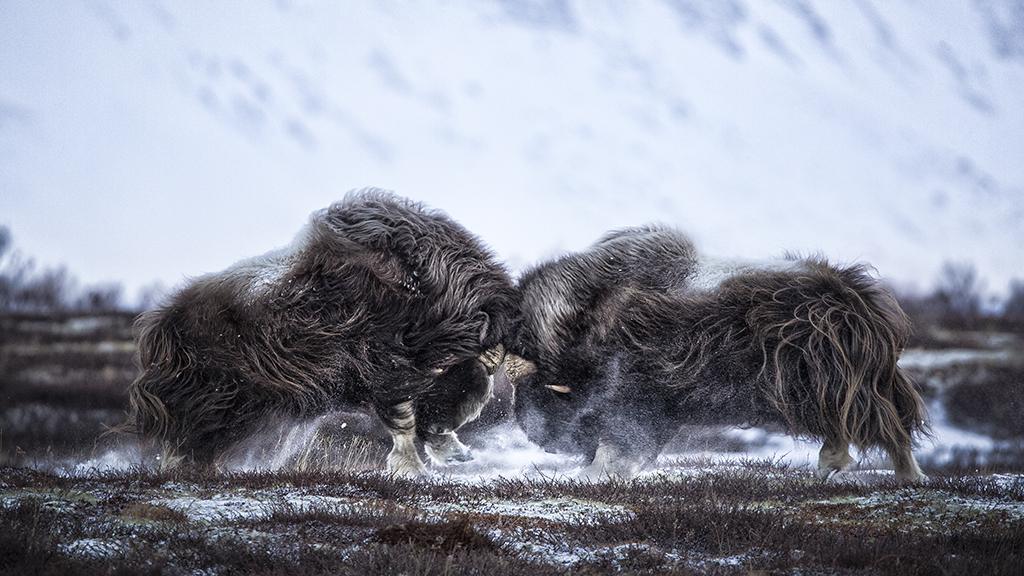
Tapio Kaisla took a trip to Dovrefjell-Sunndalsfjell National Park, Norway, to find these oxen in their natural habitat. Even though spring is not rutting season for these animals, they were already seriously testing their strength against each other. The air rang out with the loud bang of the head-on collision.

Colorado red
Annie Katz, US
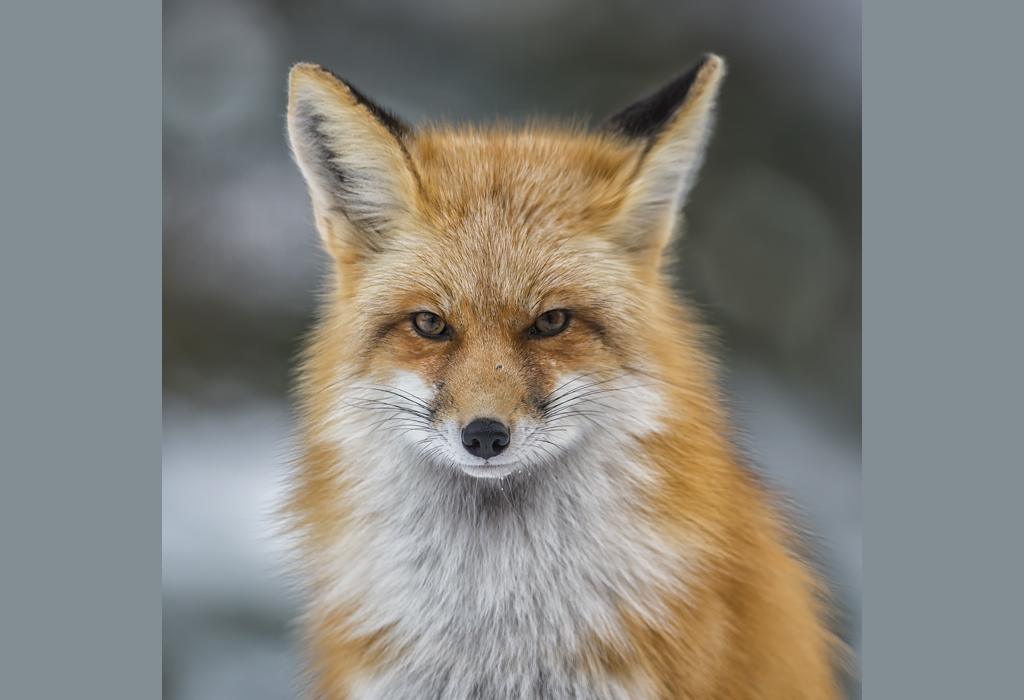
It was a crisp, clear day in January when Annie Katz saw this Colorado red fox hunting in her neighbour's field in Aspen, Colorado, US. The light was perfect, and she took the photo as the fox approached her, looking right into the lens of her camera.

The couple
Sergio Sarta, Italy
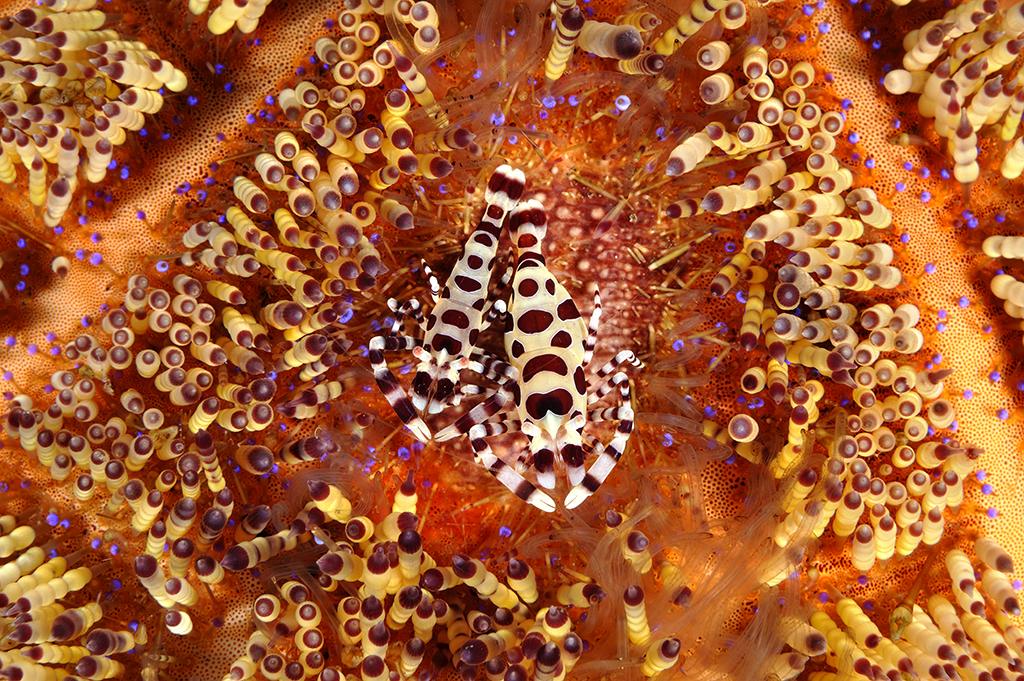
During a dive off the coast of Tulamben, Bali, Indonesia, Sergio Sarta saw a bright-coloured organism - a fire urchin with an elegant couple of little Coleman shrimps. The fire urchin has quills that are very toxic to humans - the shrimps avoid this danger by seeking out safe areas between the quills.

Jelly starburst
Andrea Marshall, US
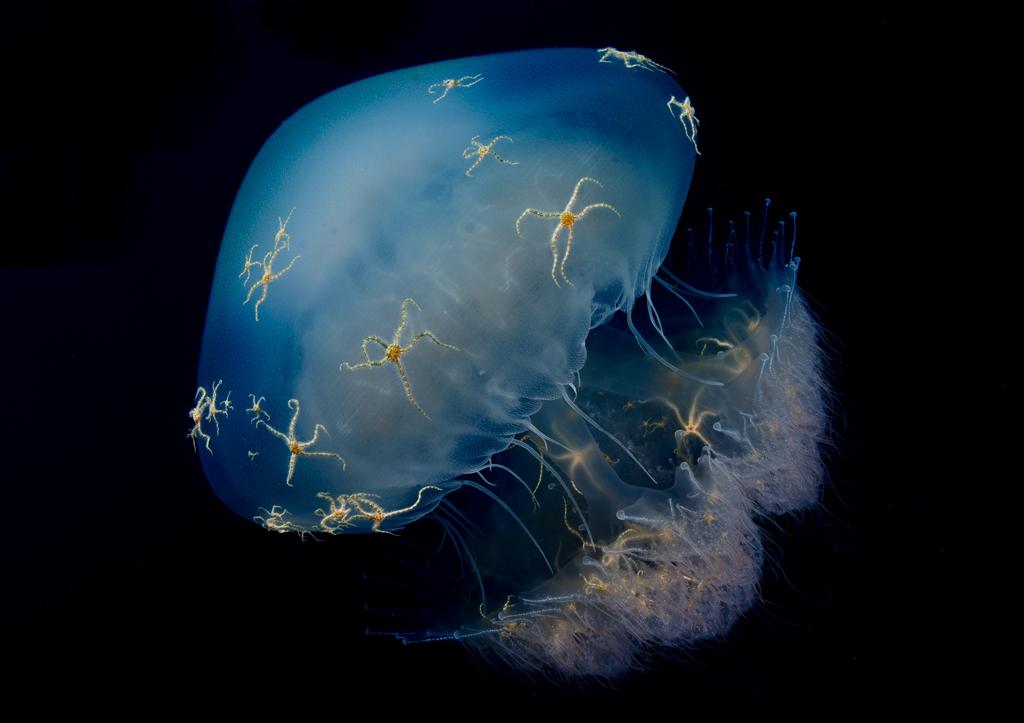
Andrea Marshall was snorkelling off the coast of Mozambique when she came across hundreds of large jelly-fish. Many were covered with brittle stars - opportunistic riders, taking advantage of this transport system to disperse along the coast. Delicate lighting makes the jelly glow, so the viewer can focus on the subtle colours and textures.

The stand-off
Michael Lambie, Canada
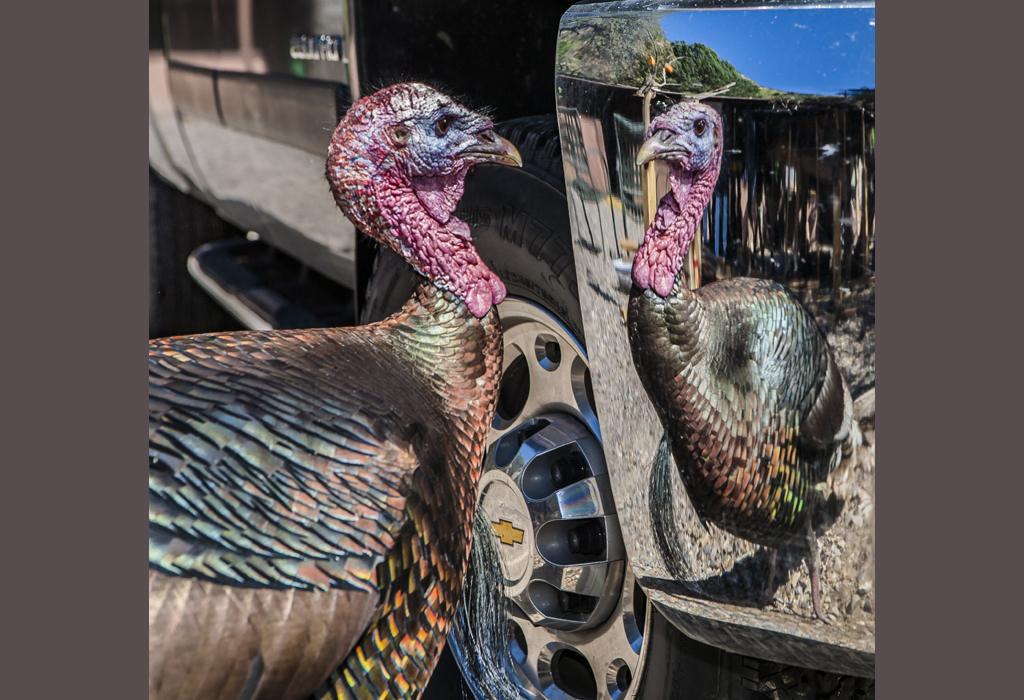
It was breeding season and all the male turkeys were putting on a show for the females, but a number of birds seemed a little confused. This one was more concerned with the potential suitor in front of it, not realising it was its own reflection.

Into the night
Karine Aigner, US
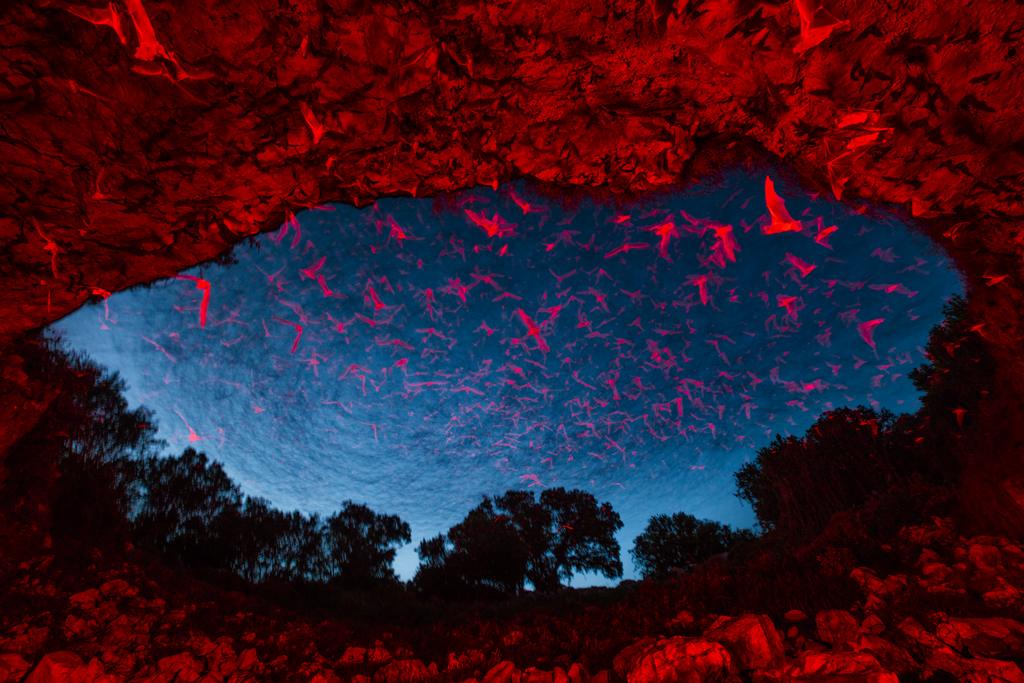
During the summer months, 20 million Mexican free-tailed bats arrive at Bracken Cave in San Antonio, Texas, US, to give birth and raise their young. Each evening at dusk, the hungry mothers emerge into the night in a vortex, circling out through the entrance and rising into the sky to feed on insects.

Willow up close
David Maitland, UK
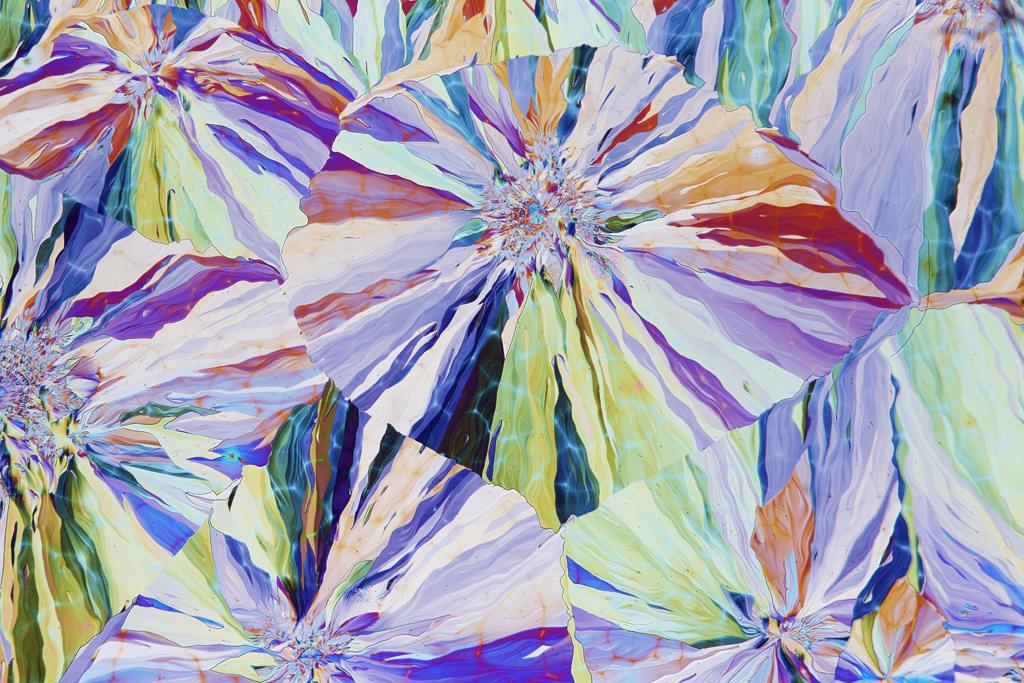
David Maitland photographed the crystallised chemical salicin, which comes from willow tree bark. Salicin forms the basis of the analgesic Aspirin - no doubt this is why some animals seek out willow bark to chew on.

The blue trail
Mario Cea, Spain
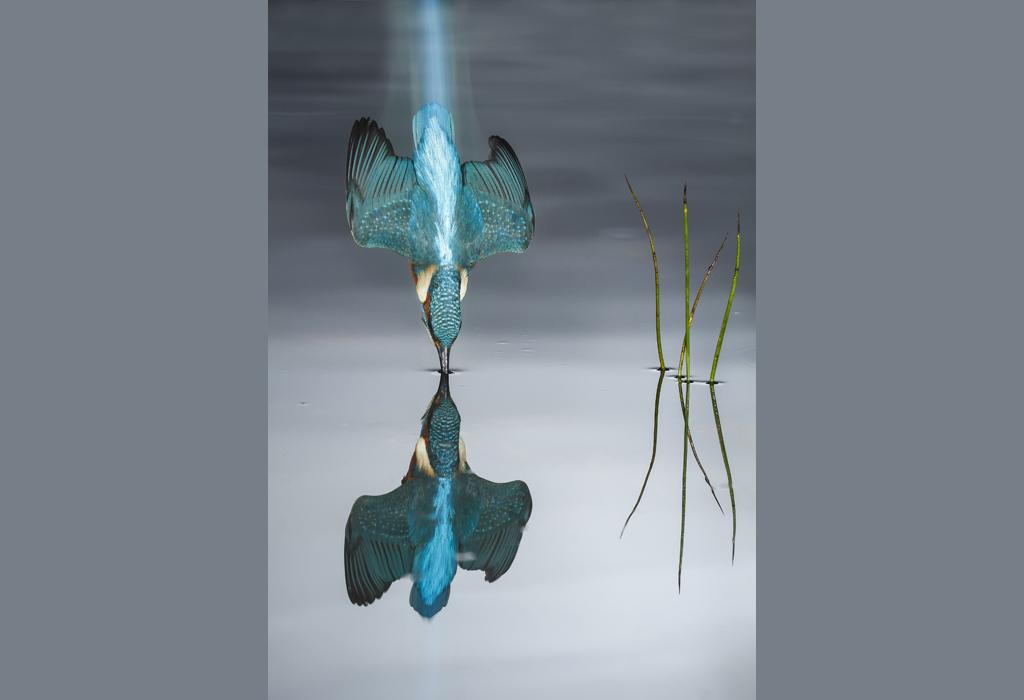
The kingfisher frequented this natural pond every day, and Mario Cea used a high shutter speed with artificial light to photograph it. He used several units of flash for the kingfisher and a continuous light to capture the wake as the bird dived down towards the water.

Eye in focus
Ally McDowell, US/UK
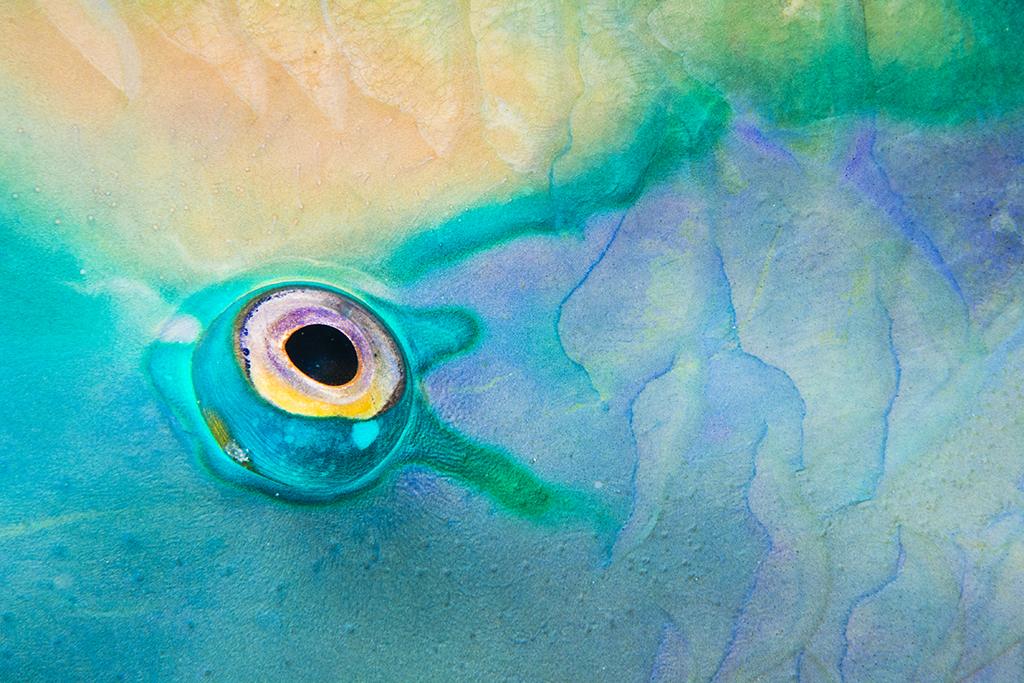
Ally McDowell often focuses on colours and patterns underwater - and this is the eye of a parrotfish during a night dive.

Spiral
Marco Gargiulo, Italy
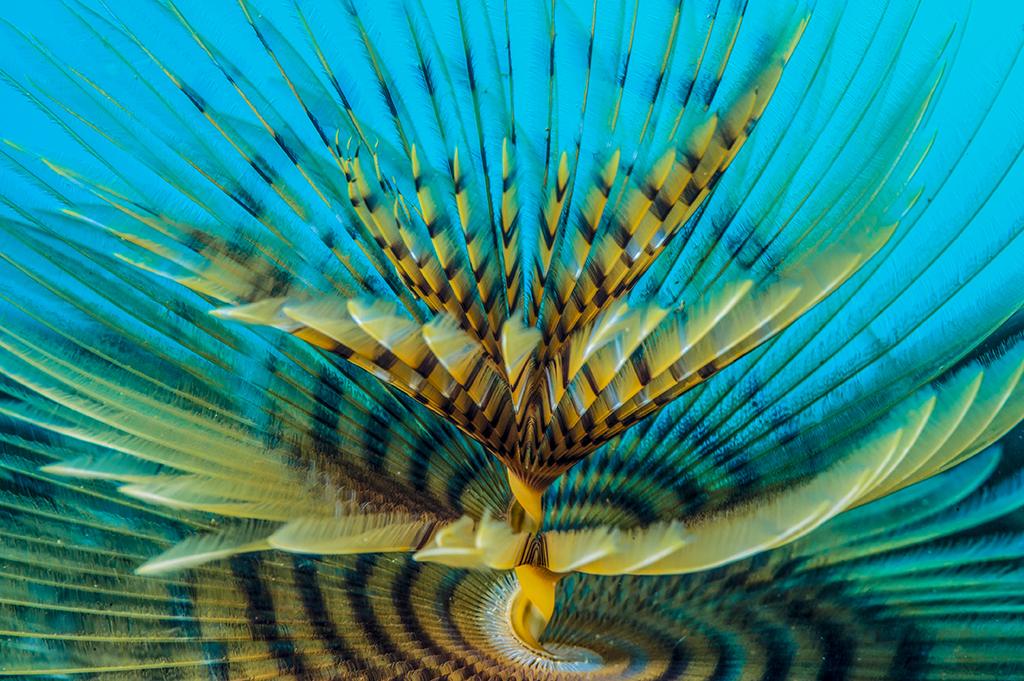
Sabella spallanzanii is a species of marine polychaete, also known as a bristle worm. The worm secretes mucus that hardens to form a stiff, sandy tube that protrudes from the sand. It has two layers of feeding tentacles that can be retracted into the tube, and one of the layers forms a distinct spiral.

Eye contact
Guy Edwardes, UK
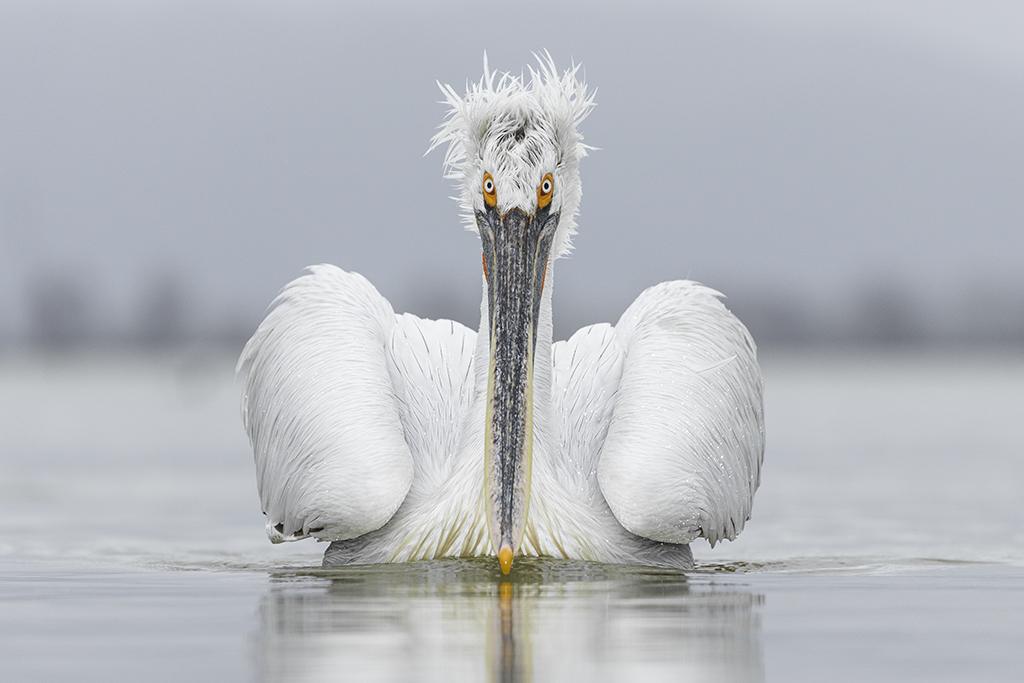
The Dalmatian pelican, seen here on Lake Kerkini, Greece, is the largest species of pelican in the world. It is native to eastern Europe, Russia and Asia. However, its population is currently threatened in some areas from hunting, water pollution and habitat loss, particularly a decline in wetlands.

Confusion
Rudi Hulshof, South Africa

Rudi Hulshof wanted to capture the uncertainty of the future of the southern white rhino in the Welgevonden Game Reserve, South Africa, because of poaching. He anticipated the moment when these two rhinos would walk past each other, creating this silhouette effect and the illusion of a two-headed rhino.

Tasty delicacy
Cristobal Serrano, Spain
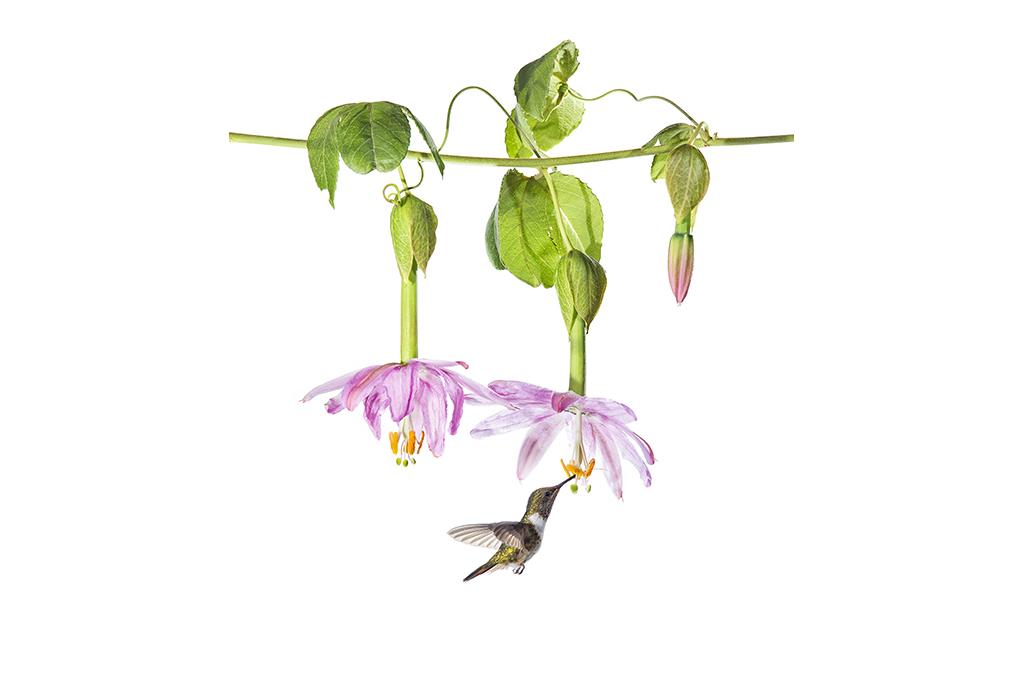
The natural world provides countless magical moments, none more so than the delicate moment a tiny, elegant hummingbird softly inserts its slender bill into the corolla of a flower to drink nectar. Cristobal Serrano was lucky enough to capture that exact moment in Los Quetzales National Park, Costa Rica.

Breakfast time
Cari Hill, New Zealand

Shortly after purchasing the Giraffe Manor in Nairobi, Kenya, the owners learned that the only remaining Rothschild's giraffes in the country were at risk, as their sole habitat was being subdivided into smallholdings. So they began a breeding programme to reintroduce the Rothschild's giraffe into the wild. Today, guests can enjoy visits from resident giraffes in search of a treat.

Caterpillar curl
Reinhold Schrank, Austria
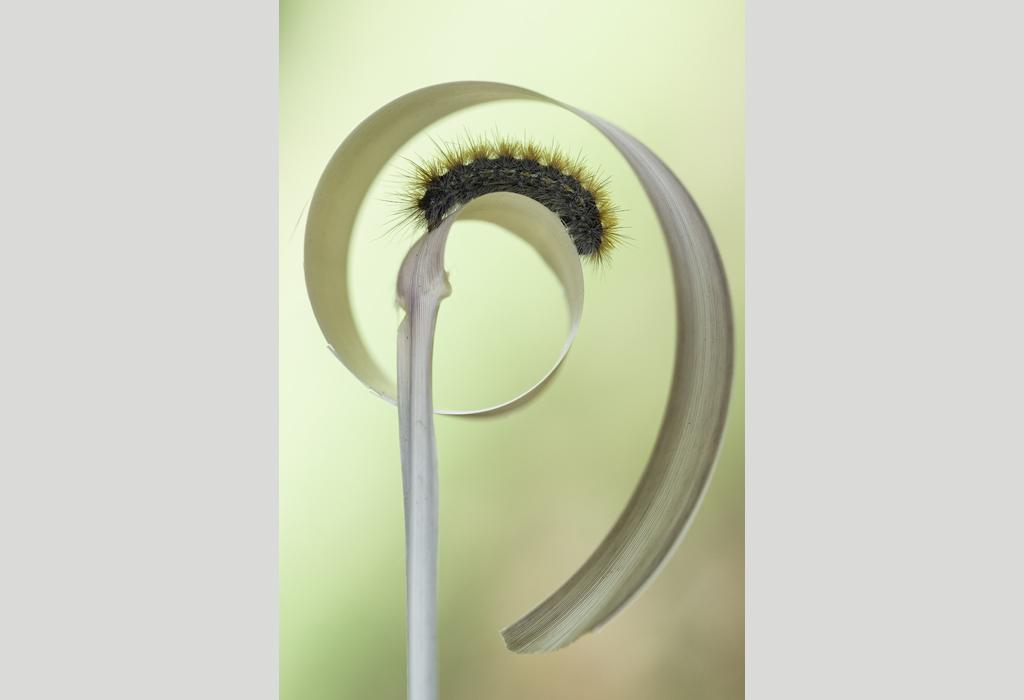
Reinhold Schrank was at Lake Kerkini, Greece, taking pictures of birds, but the conditions were not ideal, so he looked for other options. He saw this caterpillar on a flower and encouraged it on to a piece of rolled dry straw. He had to work fast because the caterpillar was constantly moving.

Rainbow wings
Victor Tyakht, Russia
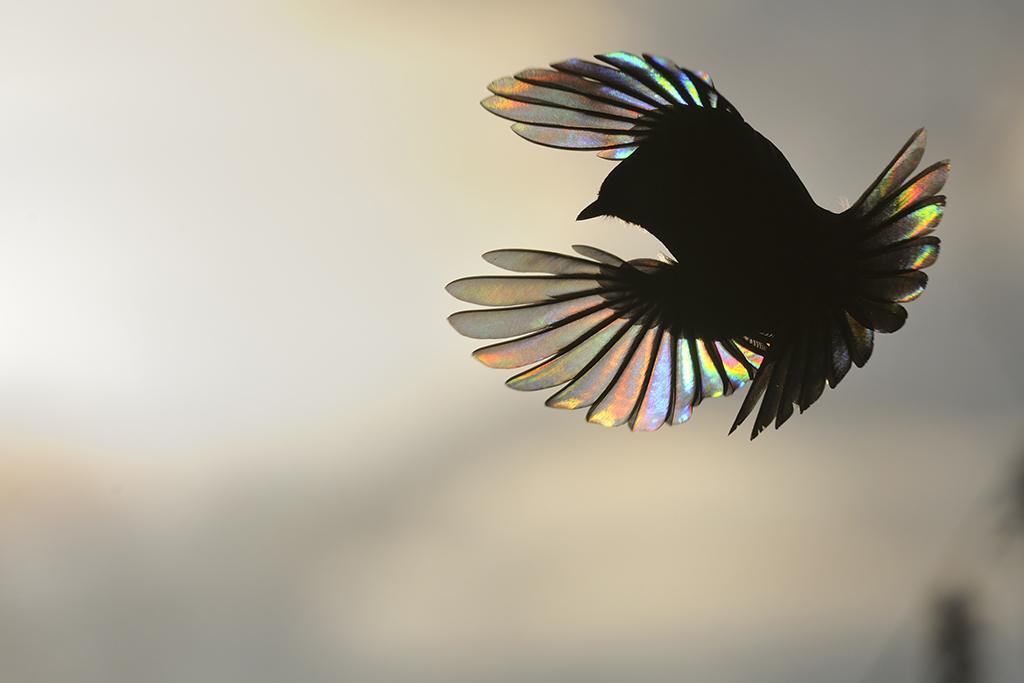
The bird's wing acts as a diffraction grating - a surface structure with a repeating pattern of ridges or slits. The structure causes the incoming light rays to spread out, bend and split into spectral colours, producing this shimmering rainbow effect.

Wildlife Photographer of the Year is developed and produced by the Natural History Museum, London.
Vote for the People's Choice Award here, external before 10 January 2017.
The exhibition runs until 10 September 2017.
Top image: Hitching a ride - by Daisy Gilardini, Switzerland.
A female polar bear and her cub in Wapusk National Park, Manitoba, Canada.
- Published5 September 2016
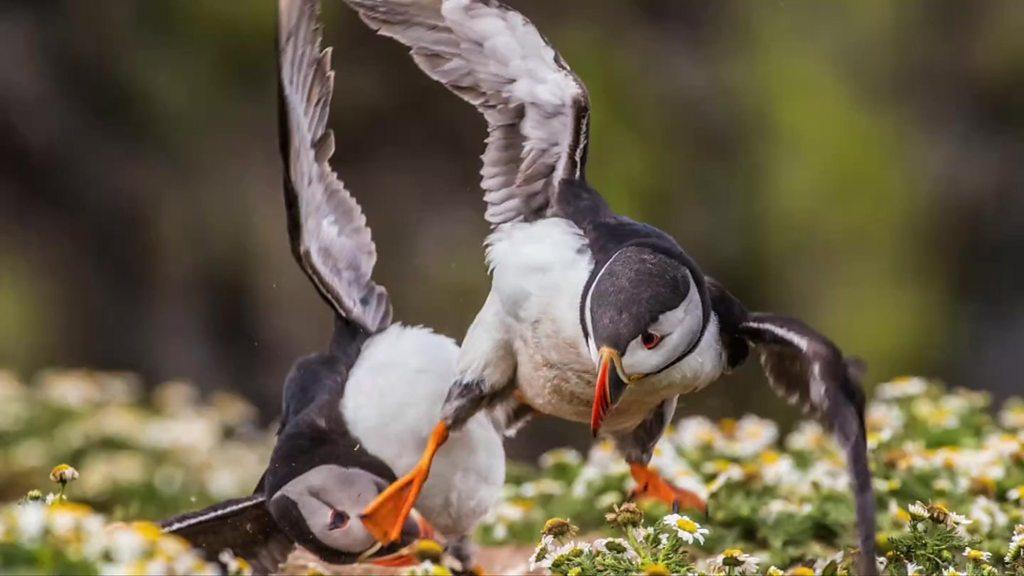
- Published5 September 2016
- Published27 August 2016
